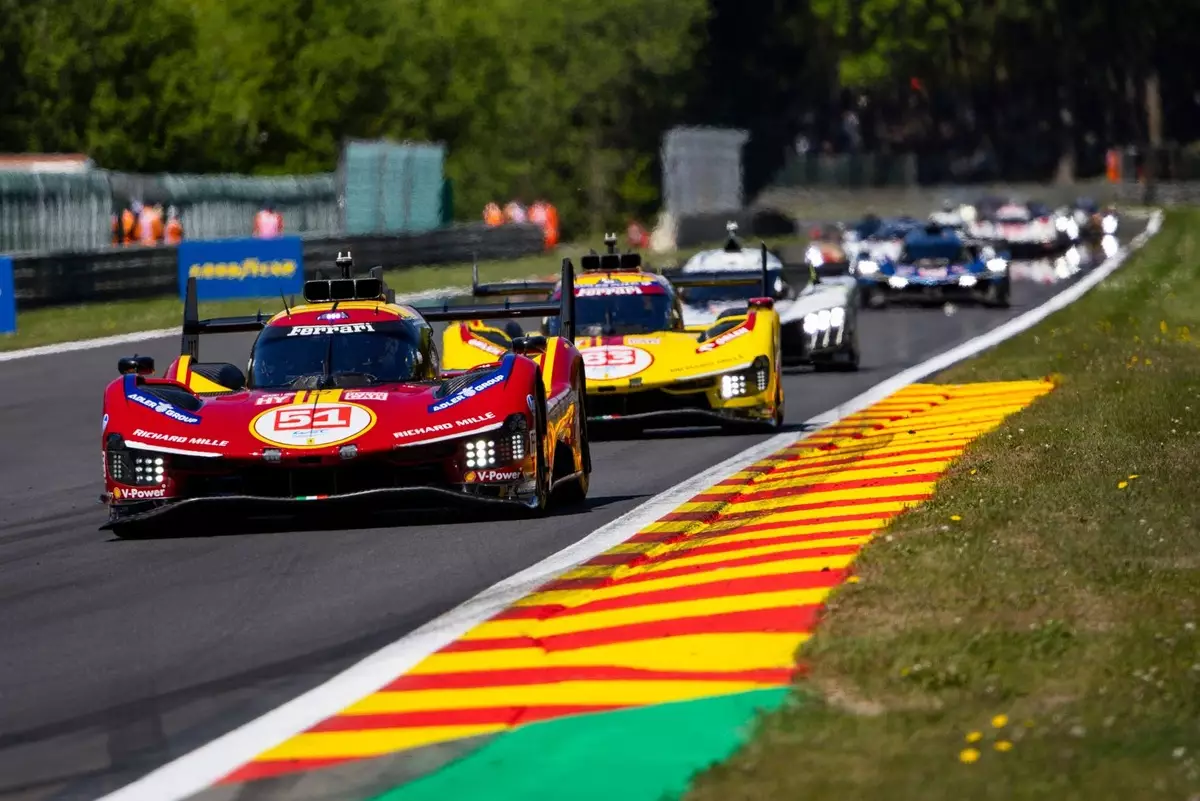The Spa 6 Hours race showcased an electrifying display of motorsport prowess, culminating in a hard-fought victory for Ferrari. The triumph of teammates James Calado, Antonio Giovinazzi, and Alessandro Pier Guidi was not merely a testament to their driving skills; it epitomized the efficacy of strategic teamwork and precise execution under pressure. They secured their victory over their sister 499P Le Mans Hypercar by a narrow margin of four seconds against Nicklas Nielsen, Miguel Molina, and Antonio Fuoco, illuminating the deeply competitive fabric of the event where split-second decisions and tactical choices shaped the race’s trajectory.
Consolidating Power: Ferrari’s Dominance in Qualifying
Going into the race, Ferrari established its dominance by entirely occupying the podium in the Hyperpole qualifying session. This impressive feat was a clear indication of the 499P’s performance capabilities. However, the race quickly evolved into a test of endurance and skill, as there was no room for complacency. The close contest with competitors such as Alpine, BMW, and Peugeot injected a level of intensity that kept fans on the edge of their seats. The initial race pace set by Ferrari didn’t guarantee them an easy victory; rather, it laid the groundwork for an impending tactical battle that would unfold in the final hour.
A Race of Strategy and Precision
As the race progressed, the dynamics shifted. The second-place Ferrari appeared poised for a potential resurgence, particularly after the deployment of safety cars reshuffled the field. However, Ferrari’s strategic execution diverged in the latter stages of the race, showcasing an exemplary dual strategy designed to maximize points while minimizing risk under pressure. Pier Guidi’s drive showcased the balance between aggression and conservation—eager to push while also aware of impending fuel requirements. This delicate balance is one of the hallmarks of successful endurance racing—knowing when to push the car to its limits and when to ease off and save an advantage.
In a thrilling hour of racing that tested their mettle, Pier Guidi’s resolve allowed him to quickly re-establish his position after both Ferrari entries encountered setbacks. The pivotal moment came when the two Ferrari vehicles pitted just a lap apart. Pier Guidi’s acute race awareness played a crucial role; he managed to overturn a six-second deficit and regain his momentum just when it was most needed, illustrating how critical real-time decision-making can be in a high-stakes environment.
Challenges and Missed Opportunities
Despite Ferrari’s compelling performance, other teams, such as Alpine, BMW, and Peugeot, faced their own set of challenges. Alpine’s #36 entry, for instance, suffered from a slow puncture during a crucial racing stage, limiting its potential to capitalize on a burgeoning challenge. This instance not only showcases the unpredictable nature of endurance racing but also highlights the importance of mechanical reliability and the cruel twists of fate that can alter the results of even the most strategically executed plans.
Similarly, BMW’s early leadership was undermined by a braking issue that forced their retirement just an hour before the conclusion. The dramatic turn of events, combined with Peugeot’s competitors clashing, exemplifies how multitiered strategies can sometimes fall apart in the face of unforeseen accidents. Such incidents raise questions about the prioritization of risk management in factory settings where teams must weigh their tactical approaches against the unpredictable nature of the race.
A Competitive Landscape Redefined
The race’s conclusion catalyzed discussions around team dynamics and strategies. With Toyota finishing fourth, despite being favored to pose a more significant threat, it became evident that consistency and reliability were just as vital as speed on this storied circuit. Moreover, the performance of the Jota Cadillacs—finishing fifth and sixth—illustrates the rising competitiveness in the field, creating an exciting atmosphere for fans and driving teams to elevate their strategies continuously.
Ferrari’s championship-caliber performance at Spa stands as a powerful narrative within the motorsport universe, embodying the spirit of tenacity, strategy, and superiority, while illustrating the lessons learned through the struggles and triumphs of racing. It’s this thrilling unpredictability, coupled with extraordinary feats of engineering and teamwork, that continues to captivate audiences and shape the future of endurance racing.


Leave a Reply